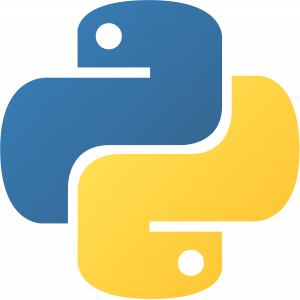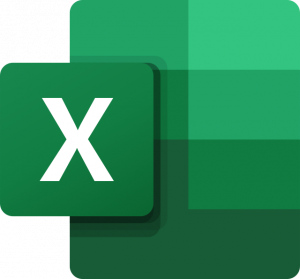Introduction
The field of data science is evolving rapidly, and staying ahead of the curve requires leveraging the latest and most powerful tools available. In 2024, data scientists have a plethora of options to choose from, catering to various aspects of their work, including programming, big data, AI, visualization, and more. This article explores the top 26 data science tools that are shaping the landscape of data science in 2024.
Table of contents
Programming Language-driven Tools
1. Python
Python remains the go-to language for data scientists due to its simplicity, versatility, and a rich ecosystem of libraries.

Key Features:
- Extensive library support (NumPy, Pandas, Scikit-learn).
- Wide community and strong developer support.
2. R
R is a statistical programming language used for data analysis and visualization, known for its robust statistical packages.
Key Features:
- Comprehensive statistical libraries.
- Excellent data visualization capabilities.
3. Jupyter Notebook
Jupyter Notebooks provide an interactive computing environment, allowing data scientists to create and share documents containing live code, equations, visualizations, and narrative text.
Key Features:
- Supports multiple languages (Python, R, Julia).
- Interactive and user-friendly.
4. Copilot
GitHub Copilot is an AI-powered code completion tool, developed by OpenAI and GitHub, which suggests whole lines or blocks of code as you type.

Key Features:
- Accelerates coding process.
- Integrates with popular code editors.
5. Pytorch
PyTorch is an open-source machine learning library that facilitates building and training deep neural networks.
Key Features:
- Dynamic computational graph.
- Popular in academia and industry.
6. Keras
Keras is a high-level neural networks API written in Python, serving as a user-friendly interface for building and experimenting with deep learning models.
Key Features:
- Easy and quick model prototyping.
- Compatible with TensorFlow and Theano.
7. Scikit-learn
Scikit-learn is a machine learning library for Python, offering simple and efficient tools for data analysis and modeling.
Key Features:
- Consistent API for various algorithms.
- Well-documented and easy to use.
8. Pandas
Pandas is a data manipulation library for Python, providing data structures and functions needed to manipulate and analyze structured data.

Key Features:
- Data manipulation and cleaning capabilities.
- Integration with other libraries.
9. Numpy
NumPy is a fundamental package for scientific computing with Python, offering support for large, multi-dimensional arrays and matrices.
Key Features:
- Efficient array operations.
- Mathematical functions for array manipulation.
Big Data Tools
10. Hadoop
Hadoop is a distributed storage and processing framework, enabling the processing of large datasets across clusters of computers.
Key Features:
- Scalability for big data.
- Fault-tolerant and cost-effective.
11. Spark
Apache Spark is a fast and general-purpose cluster computing system for big data processing.
Key Features:
- In-memory processing for speed.
- Unified analytics engine.
12. SQL
Structured Query Language (SQL) is a domain-specific language used for managing and manipulating relational databases.
Key Features:
- Powerful querying capabilities.
- Widely adopted for database management.
13. MongoDB
MongoDB is a NoSQL database program that uses a document-oriented data model.

Key Features:
- Flexible and scalable document storage.
- JSON-like documents for data representation.
Generative AI Tools
14. ChatGPT
ChatGPT, developed by OpenAI, is a language model capable of generating human-like responses in a conversational context.
Key Features:
- Natural language understanding.
- Versatile for chat-based applications.
15. Hugging Face
Hugging Face provides a platform for natural language processing models and hosts a large repository of pre-trained models.
Key Features:
- Transformer-based models.
- Easy integration with various applications.
16. OpenAI Playground
OpenAI Playground offers an interactive platform to experiment with OpenAI models, enabling users to explore the capabilities of various language models.
Key Features:
- User-friendly interface.
- Access to state-of-the-art models.
General Purpose tools
17. Excel
Microsoft Excel remains a powerful tool for data manipulation, analysis, and visualization, widely used in business and academia.

Key Features:
- Spreadsheet functionality.
- Pivot tables for data summarization.
Visualization Tools and Libraries
18. Seaborn
Seaborn is a statistical data visualization library based on Matplotlib, providing a high-level interface for drawing attractive and informative statistical graphics.
Key Features:
- Beautiful and informative visualizations.
- Integration with Pandas data structures.
19. Matplotlib
Matplotlib is a 2D plotting library for Python, offering publication-quality figures in various formats.
Key Features:
- Customizable plots and charts.
- Extensive gallery of examples.
20. PowerBI
PowerBI is a business analytics tool by Microsoft, offering interactive visualizations and business intelligence capabilities.

Key Features:
- Integration with various data sources.
- User-friendly drag-and-drop interface.
21. Tableau
Tableau is a leading data visualization tool that allows users to create interactive and shareable dashboards.
Key Features:
- Real-time data analytics.
- Rich set of visualization options.
Cloud Platforms
22. AWS
Amazon Web Services (AWS) provides a comprehensive set of cloud computing services, including storage, computing power, and machine learning.
Key Features:
- Scalability and flexibility.
- Broad range of services for data science.
23. Azure
Microsoft Azure is a cloud computing platform offering various services, including data storage, machine learning, and analytics.

Key Features:
- Seamless integration with Microsoft products.
- AI and machine learning capabilities.
GUI Tools
24. Weka
Weka is a collection of machine learning algorithms for data mining tasks, with a graphical user interface for easy use.
Key Features:
- Extensive set of machine learning algorithms.
- User-friendly interface for model building.
25. RapidMiner
RapidMiner is an integrated platform for data preparation, machine learning, and model deployment, designed to be user-friendly for non-programmers.
Key Features:
- Drag-and-drop interface for workflow design.
- Automation of machine learning processes.
Version Control Systems
26. Git
Git is a distributed version control system that enables multiple developers to work on projects simultaneously.

Key Features:
- Branching and merging capabilities.
- Efficient collaboration and code management.
Conclusion
In the dynamic landscape of data science, staying ahead requires proficiency in a diverse set of tools. The top 26 tools outlined here cover programming, big data, AI, general-purpose tasks, visualization, cloud platforms, GUI tools, and version control systems. As data scientists navigate the challenges of 2024, these tools will continue to play a crucial role in shaping the future of the field. Whether you’re crunching numbers, analyzing big data, or building cutting-edge AI models, the right tool can make all the difference. Stay informed, stay innovative, and keep exploring the evolving world of data science.
Related
- SEO Powered Content & PR Distribution. Get Amplified Today.
- PlatoData.Network Vertical Generative Ai. Empower Yourself. Access Here.
- PlatoAiStream. Web3 Intelligence. Knowledge Amplified. Access Here.
- PlatoESG. Carbon, CleanTech, Energy, Environment, Solar, Waste Management. Access Here.
- PlatoHealth. Biotech and Clinical Trials Intelligence. Access Here.
- Source: https://www.analyticsvidhya.com/blog/2023/12/top-26-data-science-tools-for-data-scientists-in-2024/



